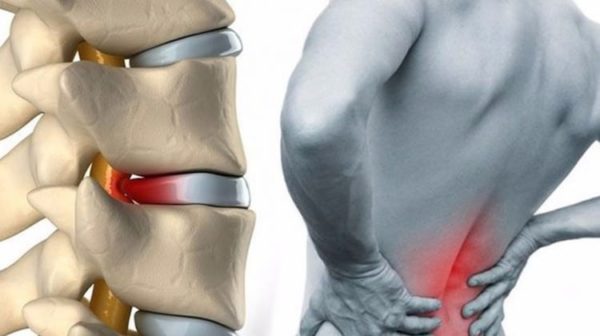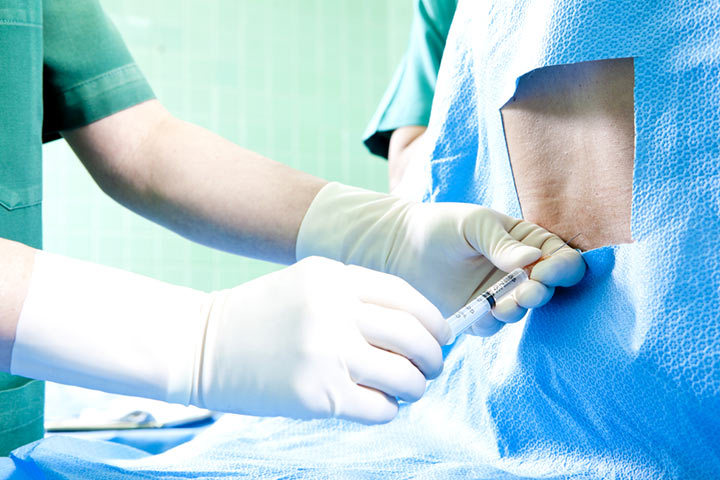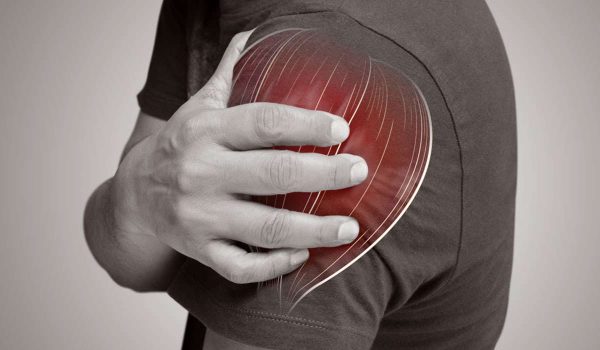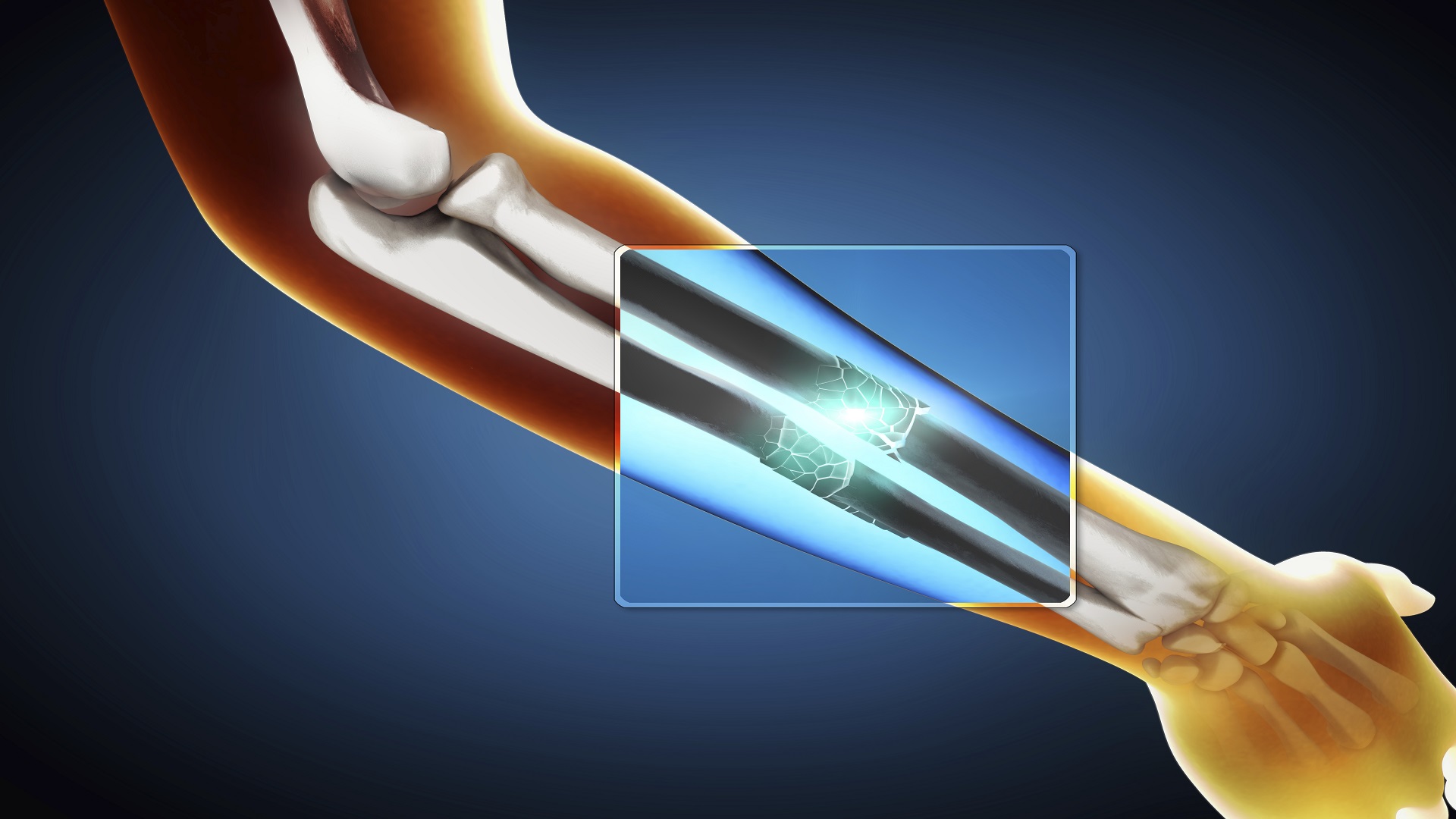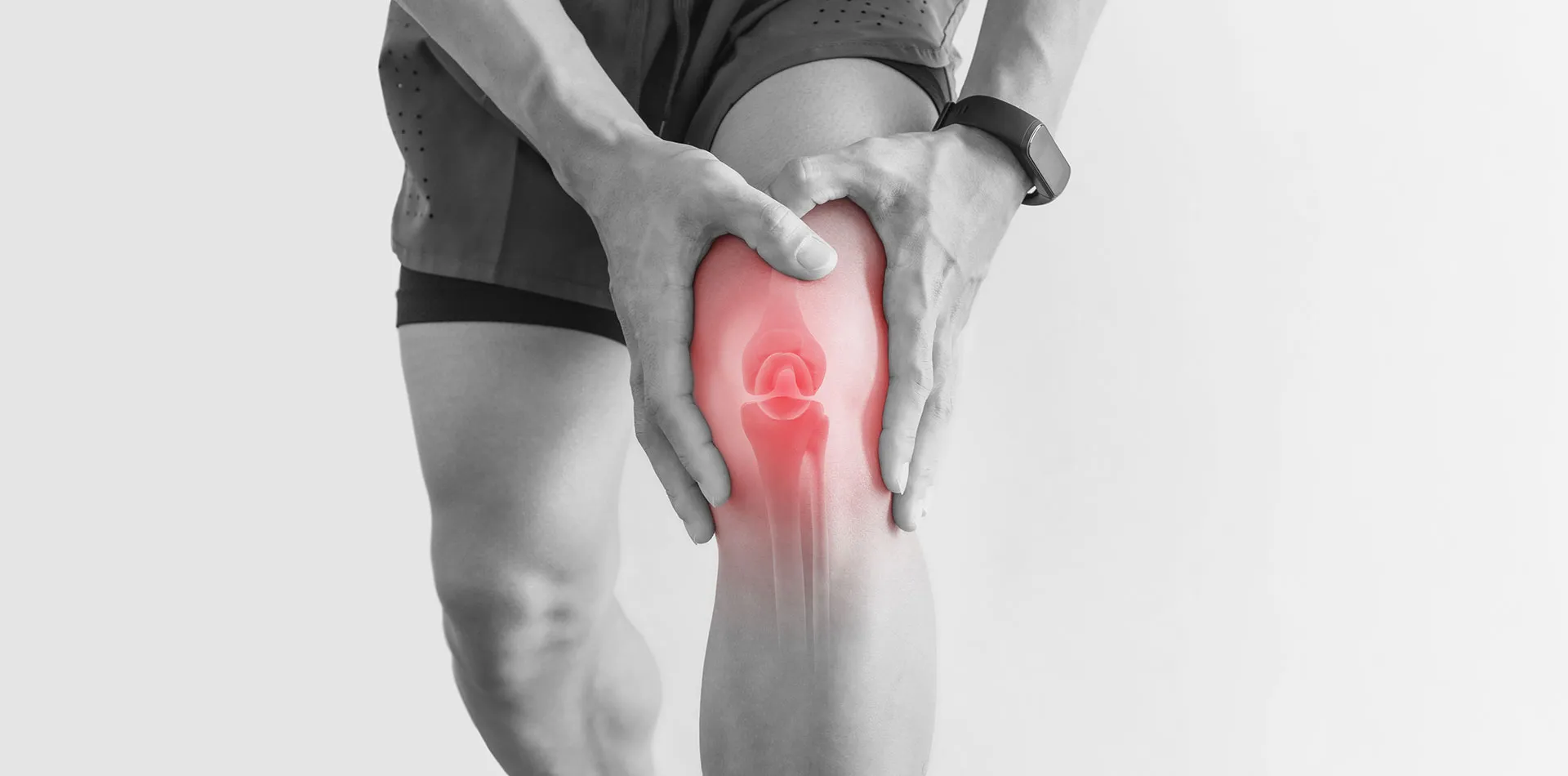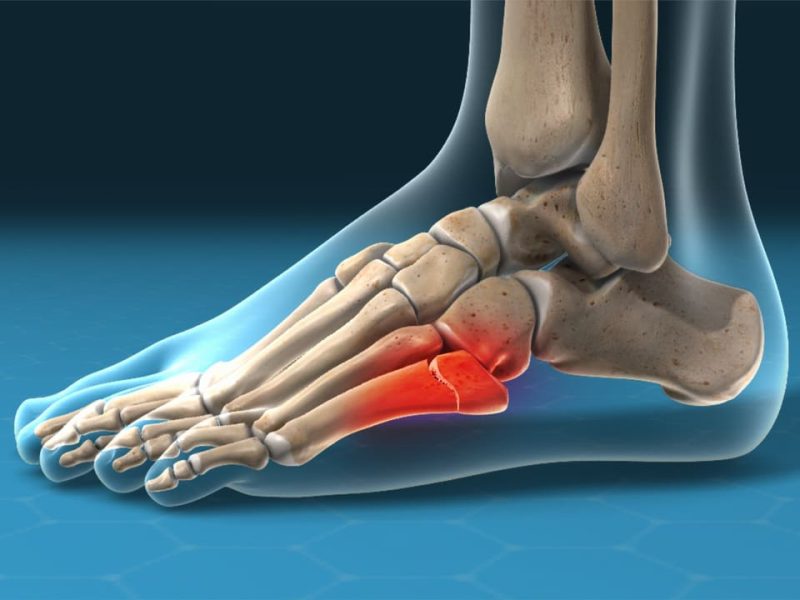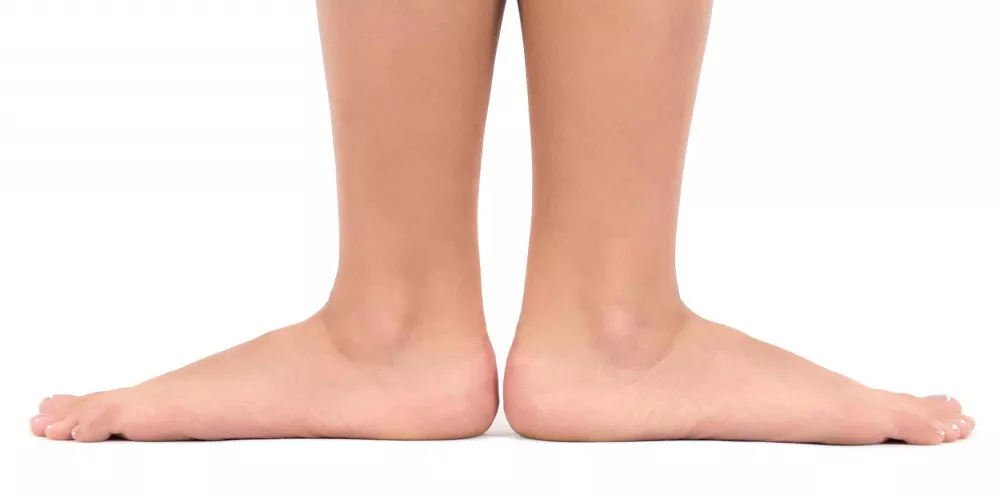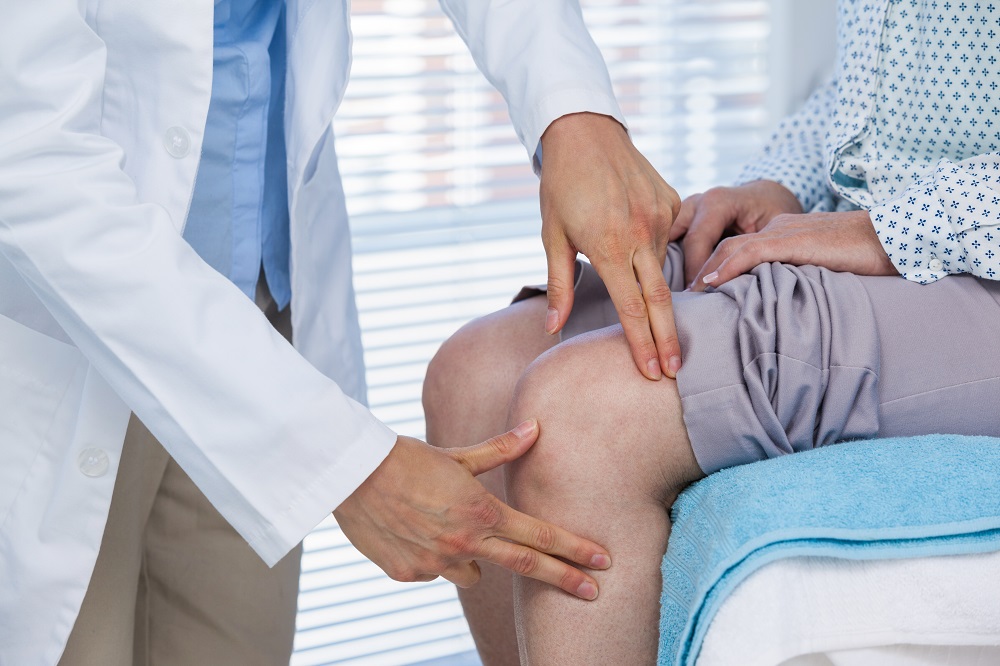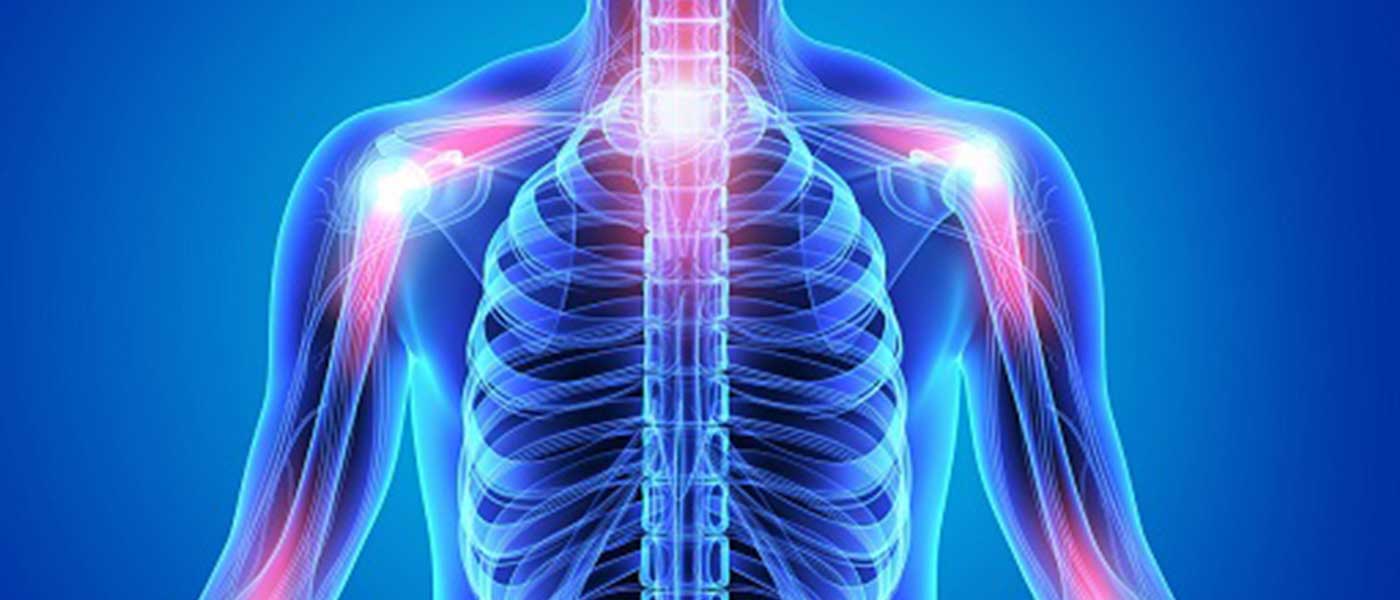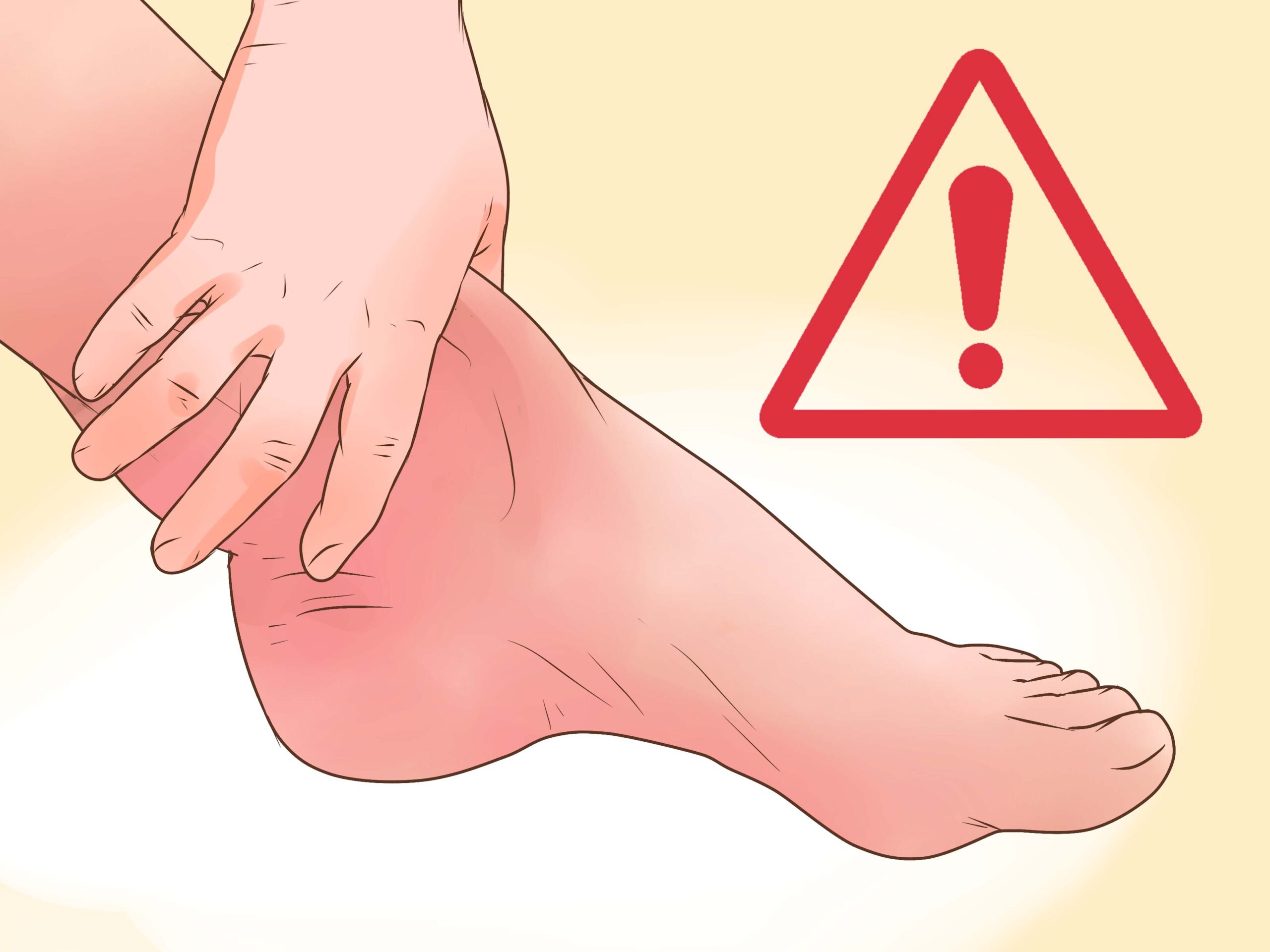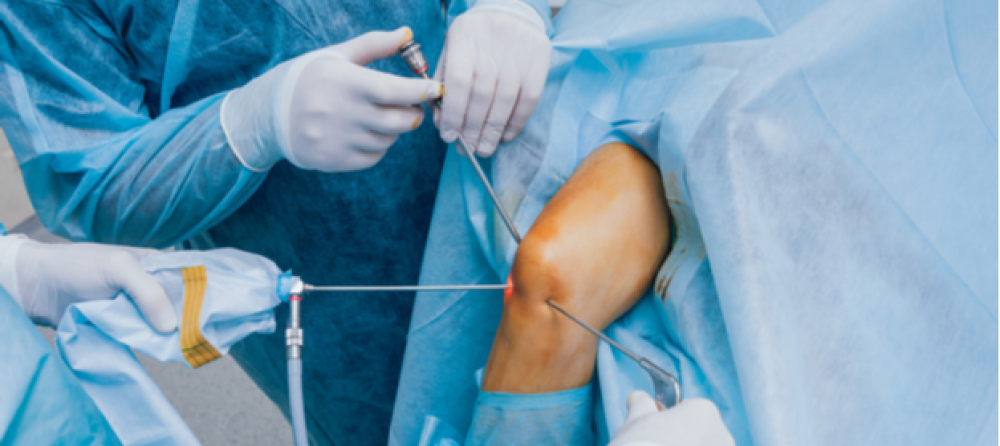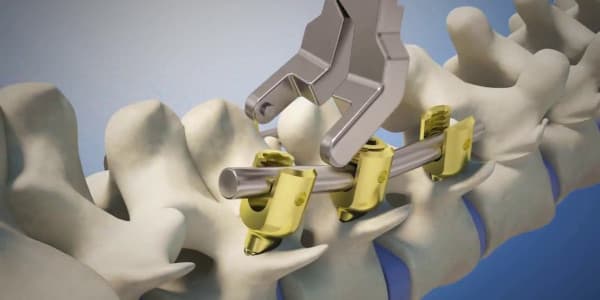Information About the Clawed Toe Specialist – the Most Challenging Cases of Bone Deformities and How Long the Treatment Takes?
Consultant: Clawed Toe is one of the most challenging bone deformities – Some of us may have heard of clawed toe, which is one of the bone deformities that affect children. It is a congenital defect that infants may have. In this article, we will shed light on this condition, its most important symptoms, the causes leading to it, its various types, and the appropriate surgical intervention to eliminate it. Follow us to answer all your questions about this topic.

Consultant: Clawed Toe is one of the most challenging bone deformities
Dr. Amr Amal is one of the top consultants in orthopedic and joint surgery at Ain Shams University. He specializes in treating clawed toe, and Dr. Amr has an excellent reputation in his field. He is considered an expert in diagnosing and treating this common problem. Dr. Amr provides personal and effective care to his patients, focusing on improving their quality of life and relieving their pain and issues.
Using the latest techniques and methods in treatment, Dr. Amr carefully evaluates each patient’s condition and provides appropriate treatment options based on their individual needs. Dr. Amr works to provide a personalized solution for each case, which may include a surgical procedure to correct clawed toe. Dr. Amr also educates patients about preventive and self-care measures for clawed toe and offers advice and guidance to maintain foot health and prevent future problems.
Dr. Amr is known for his professional and friendly approach to his patients and strives to create a comfortable and encouraging healing environment. He has received positive reviews from his patients for his extensive knowledge and competence in treating clawed toe. He is the ideal choice if you want to address this problem effectively.
What is Clawed Toe?
Clawed Toe, also known as hammertoe, is a deformity that affects an infant’s foot from birth. It causes the shape of the foot to twist and bend downward. Typically, the child does not feel any pain in this position. Clawed Toe can affect one or both feet, and the deformity is permanent, with no change in the foot’s position or movement. If neglected, this condition can significantly impact a child’s ability to walk or engage in normal activities. For more information about Clawed Toe, read the following article.

Symptoms of Clawed Toe
Clawed Toe is characterized by:
- A raised arch of the foot.
- The foot being twisted inward and bent downward, resembling a golf club.
- If the patient has it in one foot, the affected foot may appear smaller and stiffer than the healthy one.
What Causes Clawed Toe?
When looking for the primary cause of Clawed Toe at birth, it is not always clear. However, this condition is associated with the following factors:
Family history and genetics play a significant role in the occurrence of Clawed Toe.
Gender also plays a role, with males being twice as likely to develop it as females.
The fetal position in the mother’s womb during pregnancy may also contribute to the condition, as well as a deficiency in the surrounding amniotic fluid.
Some congenital causes, including other deformities that lead to Clawed Toe, may be associated with neurological and muscular disorders such as myelomeningocele, a birth defect where the neural tube does not fully close, resulting in incomplete spinal cord development.
Injuries or complications during pregnancy, such as infections, exposure to certain medications, or substances like sodium aminobenzoate, can also contribute to the development of Clawed Toe.
For more information about Clawed Toe and its leading causes, we recommend reading this article.
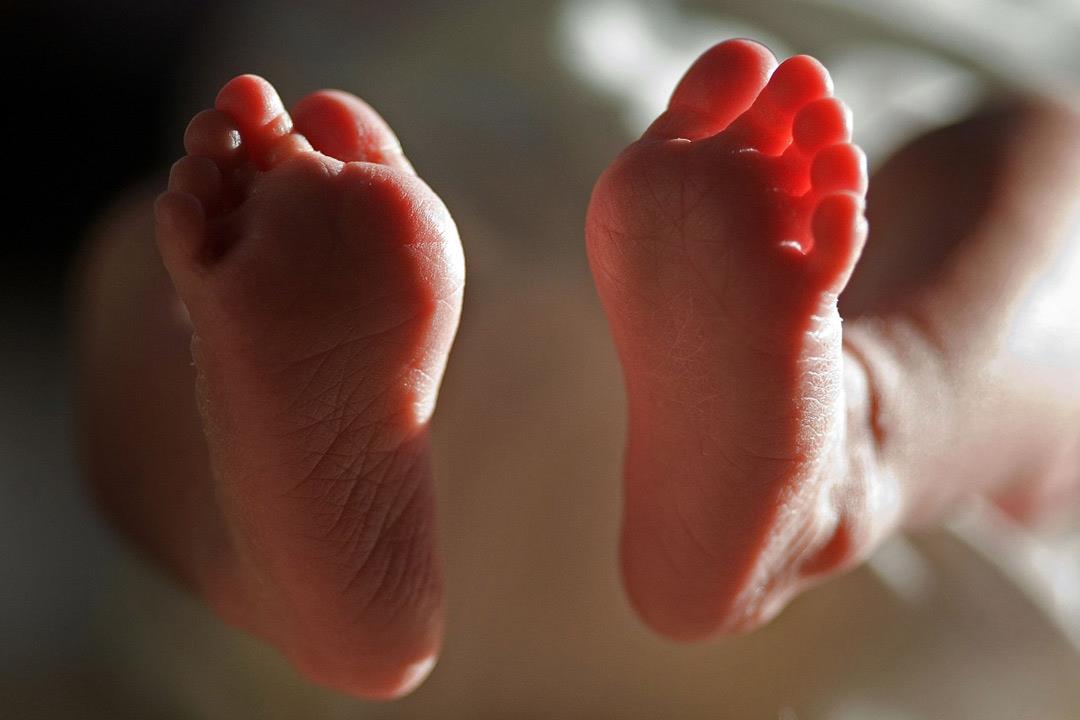
How to Diagnose Clawed Toe
Clawed Toe is diagnosed through the following means:
- Detailed medical history of the patient.
- X-ray examination of the patient.
- Comprehensive clinical examination in which the disease is diagnosed easily by observing the position of the child’s foot.
- Clawed Toe may be detected before birth through ultrasound examinations.
Types of Clawed Toe
There are two types of Clawed Toe, as follows:
- Simple Clawed Toe: This type of deformity has an unknown cause and is widespread. It occurs when a child has Clawed Toe without any other medical problems.
- Complex Clawed Toe: This type of Clawed Toe is accompanied by other health problems such as joint deformities and myelomeningocele. It is characterized by difficulties in correcting it through stretching or splinting from birth, and early surgical intervention is often preferable.
What is the Treatment for Clawed Toe?
For Clawed Toe, surgical intervention typically begins when the child is one year old. This approach has resulted in the tendons becoming less flexible and increased stiffness in the foot, making it challenging for the patient to move. Consequently, traditional surgery is primarily a cosmetic procedure that restores the natural appearance of the foot but does not fully restore its basic function.
After that, the surgeon Ponseti came up with the idea of treating Clawed Toe and proposed another treatment method involving gradual modification of the foot’s shape by stretching and lengthening the short tendons in the foot. Additionally, the treatment aims to arrange the small bones inside it and consists of three main stages:
- Stage 1: The gradual modification begins using a cast, and the doctor changes the cast once a week for about four to six sessions. The goal of this stage is to treat the primary issue before the child reaches two months of age because early treatment increases the chances of better results.
- Stage 2: This stage involves lengthening the Achilles tendon by making a small incision no larger than half a centimeter. The Achilles tendon is the strongest tendon in the human body, connecting the heel to the calf muscle. Shortening of this tendon results in Clawed Toe. After completing this stage, the cast is reapplied for another two to three weeks.
- Stage 3: After the cast is removed, the doctor prescribes a brace or orthotic device to maintain the foot’s shape after treatment, preventing a recurrence of the deformity. The child may rely on this brace until they reach the walking age.
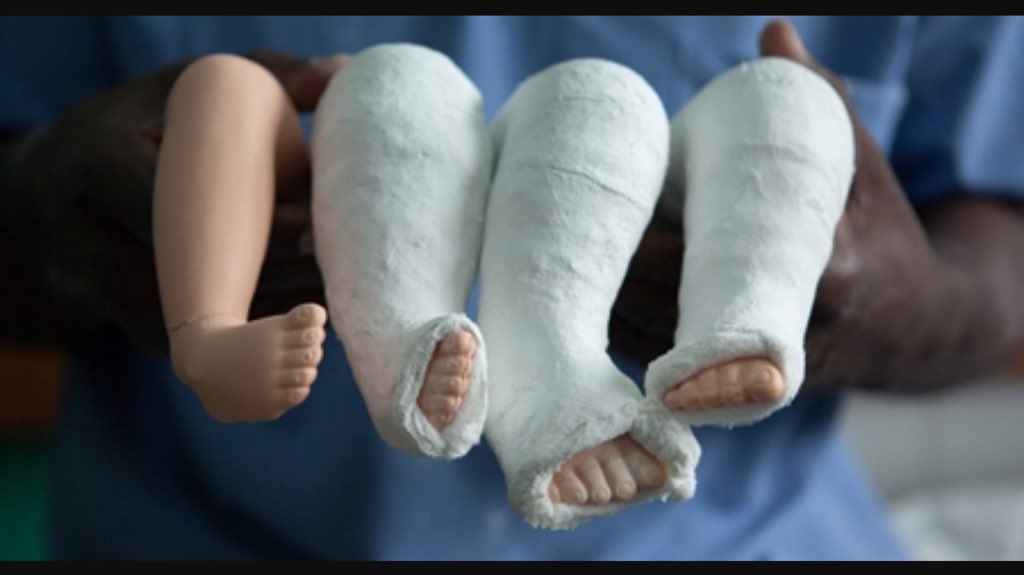
Surgical Intervention for Clawed Toe
If conservative approaches fail to treat Clawed Toe, it is better for the child to undergo surgery before they start walking. In this case, the surgeon will:
- Lengthen the Achilles tendon in the heel and address other foot issues.
- Insert pins into the foot to correct foot rotation.
- Apply a cast or brace to the foot after surgery.
A few weeks after surgery, the doctor will:
- Remove the cast and pins.
- Apply a new cast to the child’s foot, which they will wear for another four weeks.
- Then, the cast is permanently removed.
The doctor may recommend wearing a splint or specific shoes to keep the foot in the correct position after surgery, preventing a recurrence of Clawed Toe. Prepare for beautiful and healthy feet with advanced treatments for Clawed Toe provided by Dr. Amr Amal’s clinics.
For more information on treating Clawed Toe, dealing with it, and related exercises, please read the following article.
How Does Clawed Toe Affect the Child?
Usually, children with Clawed Toe do not experience pain, and the deformity often goes unnoticed during the first few months of life. However, this condition can cause difficulty for the child when walking, moving, and standing. It does not resolve on its own and requires effective treatment to correct the issue before the child reaches the walking age. In most cases, Clawed Toe is accompanied by some problems, including:
Differences in calf muscle size: Typically, the calf muscles in the affected leg are smaller than those in the unaffected leg.
Differences in shoe size: You may notice that the size of the affected foot is one and a half sizes smaller than the unaffected foot.
Mobility issues: The affected leg may appear less flexible than the healthy leg.
Shortening of the leg: The affected leg may be slightly shorter than the healthy leg, but generally, this does not pose a significant problem in mobility.
If parents do not pay attention to finding a suitable solution for their child’s Clawed Toe problem in the early stages and neglect it, Clawed Toe may progress, leading to some serious problems, including the following:
- Low self-esteem: The unattractive appearance of the foot can make the child feel abnormally self-conscious as they grow older.
- Inability to walk normally: Ankle instability due to Clawed Toe does not allow the child to walk on their toes naturally. Instead, they may resort to walking on the front or outer part of the foot, or in severe cases, even walking on the top of the foot.
- Arthritis: Clawed Toe makes the child susceptible to developing arthritis.
- Walking difficulties due to gait alterations: Modifications in the way a child walks can hinder the normal growth of calf muscles. Additionally, they may lead to significant calluses or deformities in the foot shape, causing the child to walk improperly and uncomfortably.

Success Rate of Clawed Toe Treatment
The success rate of Clawed Toe treatment is generally high, reaching up to 90%. Success largely depends on the skill, proficiency, and extensive experience of the doctor. Dr. Amr Amal’s clinics offer an effective and trusted solution for Clawed Toe problems. Prepare to live comfortably.
How Long Does Clawed Toe Treatment Take?
The duration of Clawed Toe treatment varies based on the treatment method chosen by the doctor and the severity of the child’s condition. With a well-structured treatment plan, the deformity will completely disappear, allowing the child to lead a normal life. In more than 50% of cases, treatment is successful without the need for surgery, and the patient regains the foot’s natural appearance and function.
How Long Should Clawed Toe Shoes Be Worn?
The length of time a child with Clawed Toe needs to wear medical shoes varies depending on the severity of the condition and the type of treatment they undergo. It depends on the positioning of splints and arch supports to gradually improve foot alignment. Once the foot is in the correct position, the child typically needs to wear medical shoes or orthotics for a period of time to maintain the correction.
Most children with Clawed Toe require a special type of brace known as a bone-aligning brace. It helps keep the foot in the correct angle, preventing it from reverting to the previous condition. This brace consists of a pair of shoes with a metal bar connecting them, and it is important to:
Ensure the child wears the brace every day for three months, and then wear it only during the night for another three months or during naptime for up to four years, typically.
Parents should be aware that the treatment plan for Clawed Toe may vary from one child to another, so the duration of wearing the shoes differs according to the individual case. The most important thing is to follow the doctor’s instructions to achieve the best possible outcome.

Treatment of Clawed Toe in Adults
If an adult is suffering from Clawed Toe, they should undergo a proper diagnosis of their condition to determine the extent of the problem and the best way to treat and manage it. The patient’s condition is diagnosed through obtaining a detailed medical history, conducting a clinical examination by comparing the affected foot with the healthy one, and performing X-ray examinations. The doctor chooses the appropriate treatment method based on the condition, its progression, and the patient’s walking difficulties.
Is Clawed Toe Serious?
Neglecting the treatment of Clawed Toe can lead to significant risks or even bone deformities. A child with Clawed Toe experiences delayed walking, which can cause severe stress while walking and standing. Complications may lead to curvature of the leg, in addition to knee pain, hip joint pain, and spine problems in adulthood. The child may have difficulty walking, fall frequently, and may be unable to wear shoes.
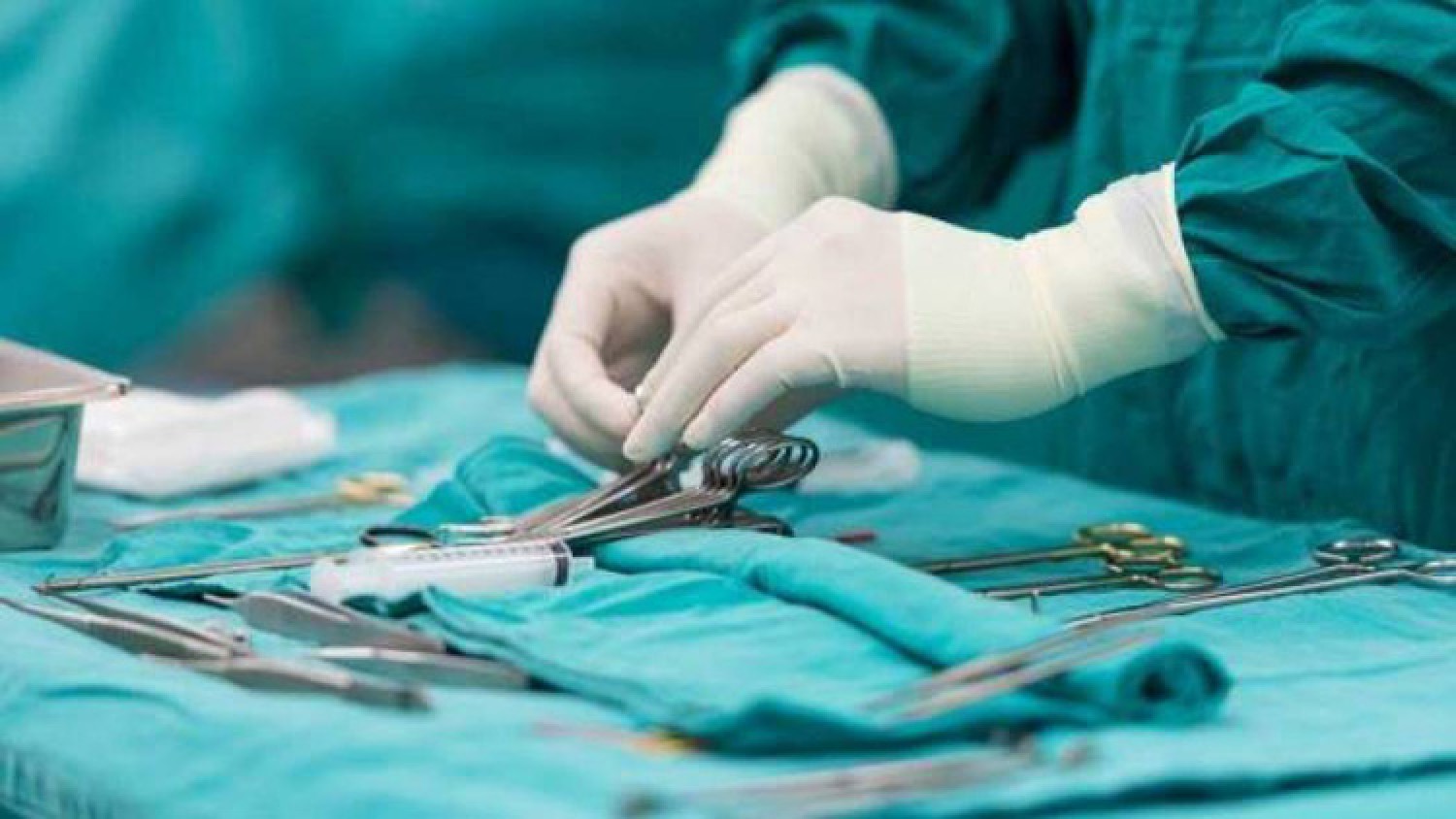
How to Prevent Clawed Toe
Pregnant women should pay close attention during pregnancy and follow necessary precautions to reduce the risk of congenital defects. It is essential to:
- Avoid smoking and being in smoky environments.
- Do not self-administer medication and consult a doctor, avoiding medications not prescribed.
- Refrain from consuming alcoholic beverages.
There are some tips to help cope with Clawed Toe:
- It is important to start treating Clawed Toe using a splint within two or three days of birth. After correcting the foot, the child should wear a designated shoe for up to 10 months, even during sleep, to prevent the foot from re-curving. When the child reaches walking age, they will wear another medical shoe.
- Parents should follow the doctor’s instructions and teach the mother to perform some regular natural exercises for the child’s foot as prescribed by the doctor.
- Follow-up appointments for the foot should be scheduled every few weeks during the early months and then extended to every few months until regular check-ups are once a year.


